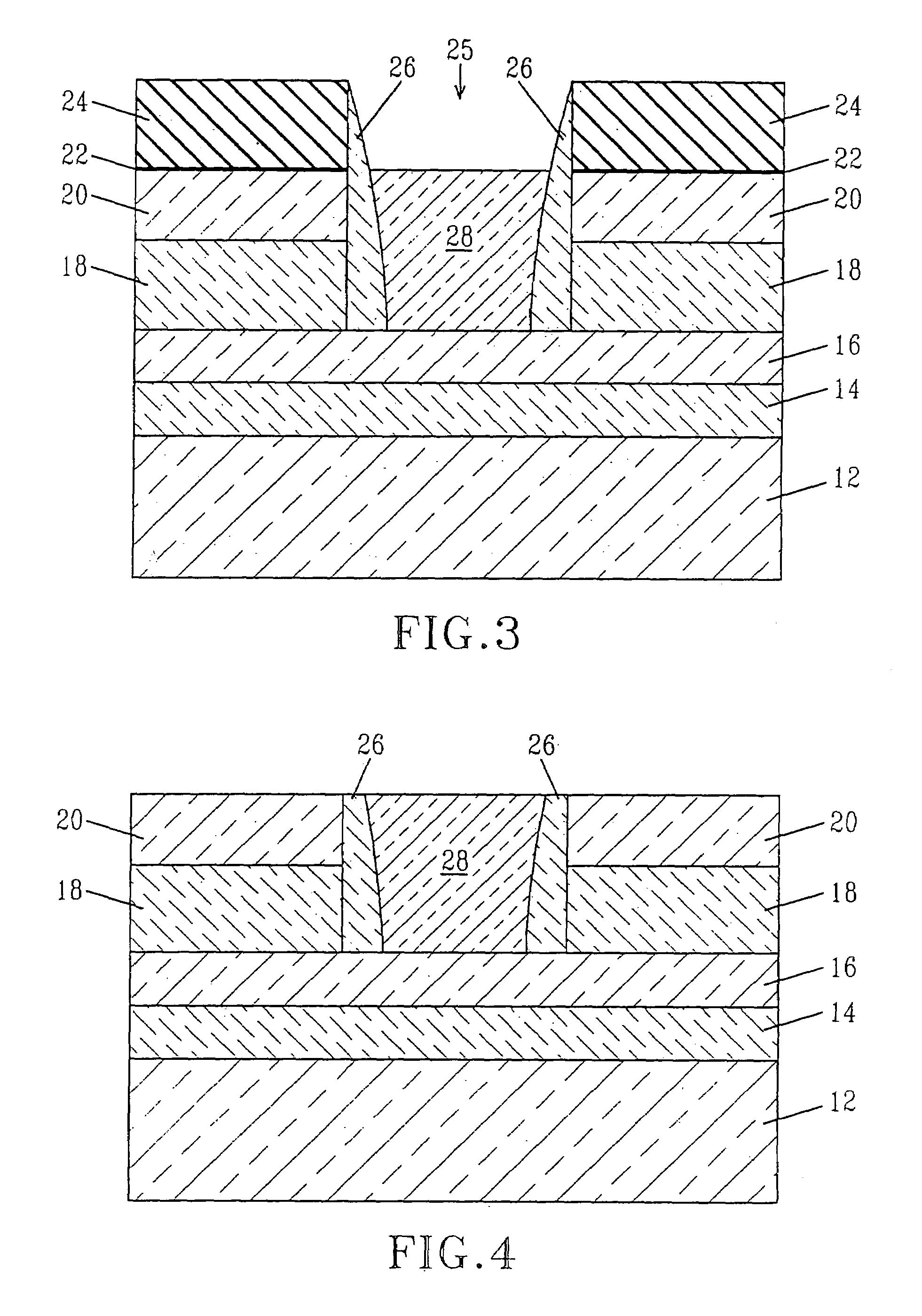Ultra-thin silicon-on-insulator and strained-silicon-direct-on-insulator with hybrid crystal orientations
a technology of ultra-thin silicon and direct on-insulator, applied in the direction of transistors, semiconductor devices, electrical apparatus, etc., can solve the problems of significant deformation of the electron mobility of (110) si surfaces, undesirable width of pfets, and inability to adapt to nfet devices, etc., to achieve the effect of improving the performance of each devi
- Summary
- Abstract
- Description
- Claims
- Application Information
AI Technical Summary
Benefits of technology
Problems solved by technology
Method used
Image
Examples
Embodiment Construction
[0033]The present invention, which provides a method of forming an SOI structure with the same thickness of the top SOI layer across the entire wafer where some area contains different crystal orientations and / or materials from the rest of the area, will now be described in greater detail by referring to the drawings that accompany the present application. In the accompanying drawings, like and corresponding elements are referred to by like reference numerals.
[0034]Referring to FIG. 1 there is shown an initial substrate 10 that is employed in the present invention. Initial substrate 10 comprises a carrier wafer 12, an optional etch stop layer 14 located on the carrier wafer 12, and a first semiconductor layer 16 of a first crystal orientation on the optional etch stop layer 14. In embodiments in which the optional etch stop layer 14 is not present, the first semiconductor layer 16 is located directly on the carrier wafer 12.
[0035]Carrier wafer 12 is comprised of any semiconductor ma...
PUM
 Login to View More
Login to View More Abstract
Description
Claims
Application Information
 Login to View More
Login to View More - R&D
- Intellectual Property
- Life Sciences
- Materials
- Tech Scout
- Unparalleled Data Quality
- Higher Quality Content
- 60% Fewer Hallucinations
Browse by: Latest US Patents, China's latest patents, Technical Efficacy Thesaurus, Application Domain, Technology Topic, Popular Technical Reports.
© 2025 PatSnap. All rights reserved.Legal|Privacy policy|Modern Slavery Act Transparency Statement|Sitemap|About US| Contact US: help@patsnap.com



